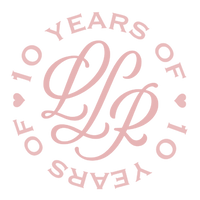When you’re spending a pretty penny for your gemstones, surely you would want to keep them secure. For this, both bezel settings and prong settings are excellent choices for your fine jewelry. However, they are quite different in terms of practicality and durability. Now the million-dollar question is: which one is better?
-
Understanding Settings
-
What is a Prong Setting?
-
Pros and Cons of Prong Settings
-
What is a Bezel Setting?
-
Pros and Cons of Bezel Settings
-
Prong vs Bezel: Which Should You Choose?
Understanding Settings
Jewelry settings (or jewelry mountings) are what hold the gemstones in place on jewelry. The most common settings are prong and bezel settings, other settings include halo settings, tension settings, pavé settings, and channel settings, but those are stories for another day. In this article, we will only be talking about prong and bezel settings.
What is a Prong Setting?

Four-Prong Setting as seen on our Birthstone Solitaire Ring
This is the most common type of ring setting with metal pins at equal distances around the gemstone, gripping the stone in its place like a claw. The tip of these prongs can vary in shape. Prongs most often feature round, squared or pointed tips. V-shaped prongs are also used on certain pointed fancy gemstone shapes, including marquise cut, pear-shaped, and heart-shaped gemstones.

Four-Prong Setting as seen on our Maleficent Solitaire Ring
Besides the standard four-prong settings, three-prong and six-prong settings are also common. Both the four-prong and six-prong settings are exceptionally popular in engagement rings.

Three-Prong Setting as seen on our Dewdrop Ring

Six-Prong Setting as seen on our Seraphina Solitaire Ring Supreme
Pros and Cons of Prong Settings
Pros of Prong Settings
The main benefit of prong settings is that they are designed to show as much of the diamond as possible and the thin prongs allow for a large amount of light entry. This is crucial for diamonds since it ensures they sparkle to their maximum capacity. For this reason, prong diamond settings are highly popular for all types of diamond jewelry, especially diamond studs and diamond rings.
The style variety and adaptability of prong settings are also the reasons why prong settings are the most popular and can actually be found in many design styles. Due to their flexibility, prong settings are an absolutely safe option because they are able to enclose all gemstone shapes.
Cons of Prong Settings
Despite its popularity, the durability of prong settings is not exactly top of the class. Compared to the bezel settings, the design of prong settings means it is prone to damage as the diamond is open to impact, and this requires much greater care to avoid chipping. Moreover, prongs can also loosen with wear but this is not always obvious until it is far too late, and the gemstone has disappeared.
Our advice is, get your prong-set jewelry to be checked by a jeweler every six months or so (or a year!) to ensure everything is secure. Better safe than sorry!
What is a Bezel Setting?

Bezel Setting as seen on our Birthstone Twine Ring
A bezel is a single ring of metal that holds a precious stone inside the rim that completely envelopes the edges of the stone. If the gemstone is round, the bezel setting will be a circle. Whether the gemstone is oval-shaped, Asscher cut, marquise cut, its bezel setting will follow its shape. This type of setting provides excellent security and protection for the center gemstone while making the ring appear trendy and sleek.

Bezel Setting as seen on our Moonlight Bezel Duo Ring
Pros and Cons of Bezel Settings
Pros of Bezel Settings
In addition to being protective, bezel settings don't loosen easily and they don't need to be periodically checked by a jeweler as often as prong settings, which makes them low in maintenance. Since this setting covers the edges of a gemstone, they can hide blemishes along the edges of a gemstone.
Cons of Bezel Settings
It is very obvious that you will not see as much of the gemstone in a bezel setting as you would in a prong setting. And this results in less light reflecting back to the viewer. Moreover, bezel settings tend to look bulkier compared to prong settings.
Prong vs Bezel: Which Should You Choose?
Choosing a ring's setting style will depend on your personal taste, preference, and lifestyle. We know it can be a confusing decision, and so we've compared the bezel and prong setting side to side, showcasing their most significant advantages and disadvantages.
|
Bezel |
Prong |
|
Stone Protection
|
✅ |
❌ |
|
Wear and Tear
|
✅
|
❌
|
|
Appearance
|
❌
|
✅
|
|
Shine
|
❌
|
✅
|
| Overall Design |
Large & Bold |
Gentle & Sleek |
For those who work with their hands or have jobs with a higher risk of bumping the ring, a bezel setting would probably be the right choice. Similarly, it would be best to target bezel for softer gemstones, such as turquoise and opal.
A prong-set ring on the other hand, is something to consider if you’re looking for a classic and elegant look with tons of sparkle. A timeless diamond with a four-prong setting will shine bright on your finger for decades to come as long as you are careful.
If you’re still wondering which of these setting styles is right for you, reach out to us and you can try out different setting, carat weight, and precious metal & gemstone combinations.
Go back to the top























































